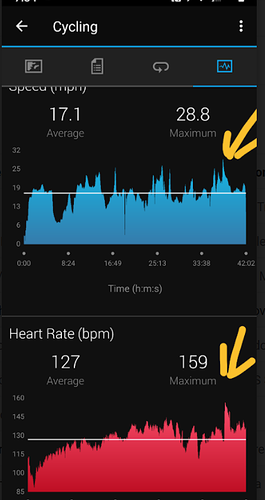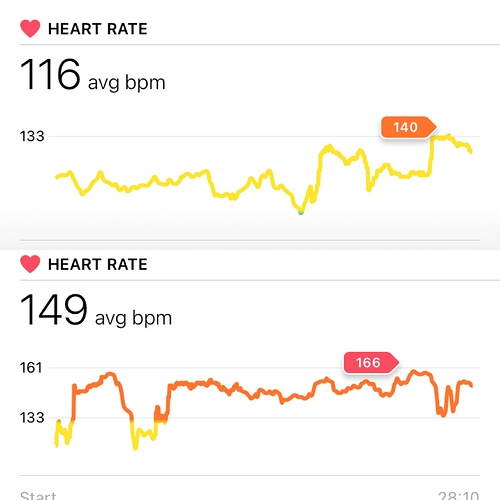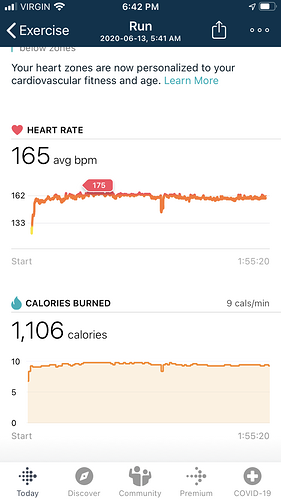So after barely doing any riding over the winter (for various reasons), today I finally go to do a short dressage session with my horse (who has been kept in work by other riders at the barn the last few months). It wasn’t too long, maybe 30 or 35 ish minutes, but I’m pretty out of shape (yay for working from home on the couch, though I do try to fast walk at least a mile every day) and noticed my fitbit showed my heart rate hitting the low 160s, with about minute spent at peak levels (173+). Pretty sure that was when we were cantering for a couple minutes working on lightening up the front end (which is hella hard on such a downhill horse, bless her heart).
It’s been making me curious about other riders’ heart rates during training sessions, both fit and unfit. Does anyone have a fitbit or other tracker and pay attention to how it looked during rides? I’ve seen some cool hylofit videos of horse and rider heart rates during competitions (Doug Payne’s is in like the 180s on xc most of the time!) but can’t find much of just regular, day to day training. Most of what I find is about horse heart rate, not rider.
If anyone feels like satisfying my curiosity and sharing, please do! I’m also trying to determine how much I can actually do riding-wise while I get fit again, if I should hold off cantering for a while or something while I get my fitness back up  I have no issues bringing my horse back into work slowly, but man I really want to just jump right back in it for me.
I have no issues bringing my horse back into work slowly, but man I really want to just jump right back in it for me.


 There was some crow hopping and bucking. My perceived effort was still low, but my adrenaline was up. Other people would have probably lunged their spicy 4yo chestnut mare before getting on…
There was some crow hopping and bucking. My perceived effort was still low, but my adrenaline was up. Other people would have probably lunged their spicy 4yo chestnut mare before getting on…
